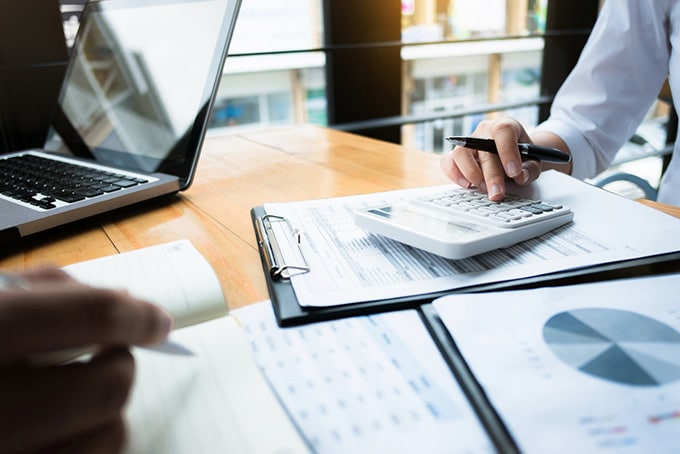
Here at American Credit Foundation, we’re big proponents of “the emergency fund.” Hopefully, if you’re reading this, you already have (or have started, at the very least) a stash of cash in case of some unforeseen catastrophe. Be it a broken water heater, a hole in the roof, an ambulance ride to the ER, or something equally surprising, unplanned expenses like these can be detrimental to your financial stability.
That’s why it’s critical to set up a system to help you save, at a minimum, three months’ worth of expenses. It’s best to save this in a separate account rather than fold it into, say, the regular checking account you use for all your bills – it’s just too easy to see that “extra” money as spending cash. And once you start saving, don’t touch your stash unless absolutely necessary. Think of the fund as your airplane floatation device… you’re glad it’s there but don’t ever want to use it.
(Keep in mind, though, that you still want a type of account you could easily access. Go the simple savings-account route, instead of a CD or bond that requires a minimum length of time.)
If you already have an emergency fund, you’re one step ahead! But you want to make sure it’s growing enough to minimize (and, ideally, completely alleviate) the long-term damage of an unexpected expense on your finances. Here are four tips to help you do just that.
Tip 1: Save Those “Extra” Paychecks
Say you receive a regular paycheck every two weeks. You’ve certainly noticed that a couple months out of the year wind up doling out three paychecks, just because of how the calendar works out. Rather than stashing those “extras” into your usual account, where the money will be eaten up by some irrelevant and utterly forgettable expenditure, swiftly transfer the amount into your emergency savings. But do it right away, before you even have a chance to miss it!

Even folks with inconsistent pay can follow this advice. If you find yourself in a particularly busy stretch leading to larger-than-normal invoices, deposit one of those paychecks (or at least part of one) directly into savings – again, before you even notice it.
Tip 2: Go on a One-Month Spending Fast
Let’s face it: We’re always going to have some expenses. There are some things – like rent or mortgage, car payments, and credit card bills or other debt – that you can’t escape. But many other expenditures are totally unnecessary.
Look through your last few bank or credit card statements to review your typical spending patterns. Or simply choose one thing that you know you purchase with regularity. Then make a goal to omit that for the next month. Be it your daily half-caff pumpkin spice latte, the weekly deluxe car wash, or Friday movie night, eliminating these splurges for 30 days could help you pad that emergency fund AND might become a new pattern toward financial security.
Tip 3: Rethink Recurring Expenses
Along the same lines as your savings fast is the idea that some (many!) of your regular expenses could be purged – for good. Take a look at all your recurring bills, and decide if there are any you can live without. A few to consider: cable TV, that unused gym membership, magazines, and other subscription-based services (think Spotify, Netflix, HBO Now, etc.).
The best part about shedding these recurring bills is that you’ve instantly eliminated future expenses, which means you’ll have a few dollars more per month (and this really does add up over time) to throw into your emergency stash instead.
For services that you don’t want to cancel, try negotiating for a lower rate on your bill or switching to a cheaper provider. (Many times, one phone call is enough to scare your provider into extending you a better rate, lest they lose your business entirely!)
Tip 4: Shed a Big-Ticket Expense
If you have a large item of significant value that you could do without, consider selling it and using the proceeds to pad your emergency fund.
A few large items to consider? If you have two cars, consider selling one (which also eliminates auto insurance). Downsize your home, or part with your boat or motorcycle (these will also cut additional insurance expenses). These are all big moves, of course, and you should carefully weigh the pros and cons before you decide to sell.
When selling your wheels, here’s an extra tip. If it’s in bad shape and you don’t think you’ll be able to sell it (and can’t, in good conscience, donate it to another unsuspecting driver), find a salvage yard. Many times, junkers will pay good money to part out old cars, even if they don’t run.
Saving money is a discipline. It’s not easy, but it’s extremely important – and it can become a very satisfying quest. Have you tried these tips to boost your emergency fund but find they’re not working? Give us a call! At American Credit Foundation, it’s our goal to help you find personalized solutions to your unique financial situation.